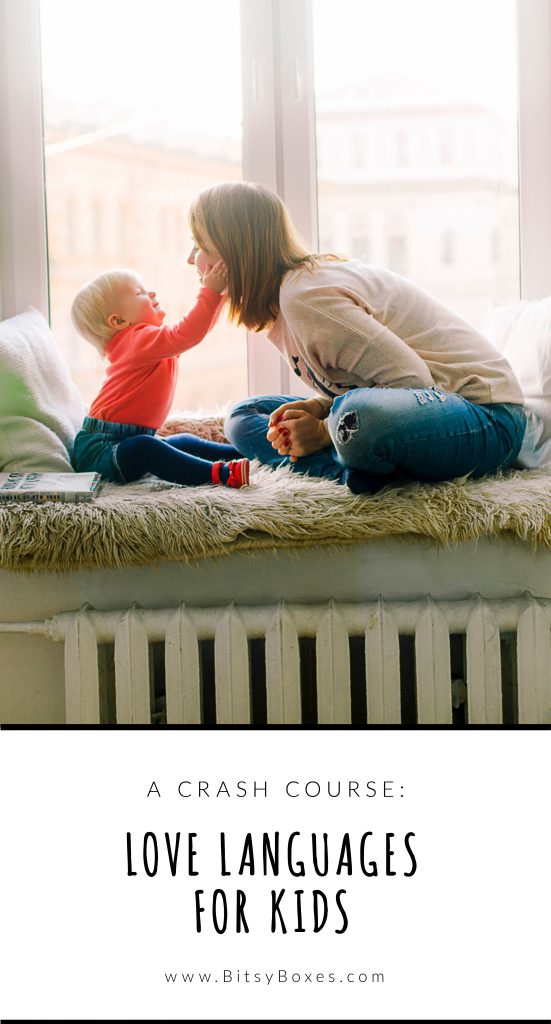Love languages: unless you’ve been living under a rock for quite some time, it’s likely you’ve heard of this way to connect with others! While it’s almost always looked at as a way to build your relationship with your partner, did you know it can also help you bond with your child? Understanding the love languages, which one your child prefers, and how to practice it at home are all great ways to build the relationships in your own family!
The Love Languages
The first part is understanding the differences between each of the languages — each requires a different way to communicate love and affection.
- Words of Affirmation: People that communicate love with words of affirmation prefer to tell their loved ones how much they love them, and hear the reassurance often that they are loved as well.
- Quality Time: Those that communicate love with quality time simply require time carved out to spend with those they love.
- Receiving Gifts: This love language is communicated by giving and receiving gifts, no matter how big or small.
- Acts of Service: This is communicated with favors, little acts of kindness, and so on.
- Physical Touch: A hug, kiss, or gentle pat on the arm or back are all ways that this love language can be communicated.
Sometimes it can be very obvious what love language a person prefers to communicate affection with, especially in adults. However, with children, it can be a little harder! Try this quiz to see if you can determine your Bitsy’s love language!
Using the Love Languages at Home
Once you’ve determined your little one’s preferred love language, it’s time to put it into practice! We’ve rounded up ways you can practice each language at home to better bond with Bitsy!
Words of Affirmation.
Words of affirmation means your little one will want words of affection, love, and encouragement spoken often to feel loved and comfortable. Praise your child often, let them know how much you love them, and never assume they just know they’re loved! Here are a few ways to practice words of affirmation with your little one:
- Write down and read them 3 things you think are great about them.
- Speak kindly, often.
- Tell them when they’re doing a great job with something.
- Write fun notes to each other– on the bathroom mirror, in lunch boxes, on their nightstand.
- Compliment your favorite things about them.
Quality Time.
This simply means your little one will feel most loved when they can spend time with you! Making sure that you save time to play with them, take them on little dates, and even just read a bedtime story together will all help them feel loved. Here are a few other ideas:
- Go on a walk together — either first thing in the morning, or in the evening after dinner!
- Watch movies together.
- Work on a puzzle together.
- Take them on one-on-one dates if they’re not an only child.
- Visit the zoo or museum together.
- Carve out time to give them your complete, undivided attention and have a conversation.
Receiving Gifts.
Of course, every child loves getting gifts, but when your love language is Receiving Gifts, it’s a little different. They feel most valued receiving any token from you — it could be a toy, a poem, a flower, anything. Here are a few things to try at home:
- Get ice cream together.
- Pick up stickers or a small treat on your next errand.
- Make a small toy out of household objects.
- Pick flowers to make bouquets to give each other.
- Give them candy for a good day, great job doing chores, etc.
Acts of Service.
Those that communicate with this language love to help others and feel loved when they receive help. Letting your little one help you around the house, and helping them with things throughout the day are the best way to show affection! Try some of these at home:
- Make a meal together.
- Include Bitsy in your chores around the house.
- Ask, “What can I help you with today?”
- Clean up their toys with them.
- Go grocery shopping together.
Physical Touch.
This one is probably the most obvious — if this is their love language, your little one will just prefer physical contact and nearness to you. More frequent hugs, sitting together on the couch, and similar acts will speak loudest to them. Here are some other ways to interact:
- Play wrestle, or have a tickle fight.
- Try a bear hug instead of a regular hug next time.
- Let them sit in your lap for story time.
- Rub noses or give butterfly kisses.
- Link arms and skip down the street or aisle at the store.
- Exchange kisses.
Learning your little one’s love language and how to speak it will bring you so much closer together! Everyone communicates their love and affection differently, but your family will work best together with an understanding of each other’s!
